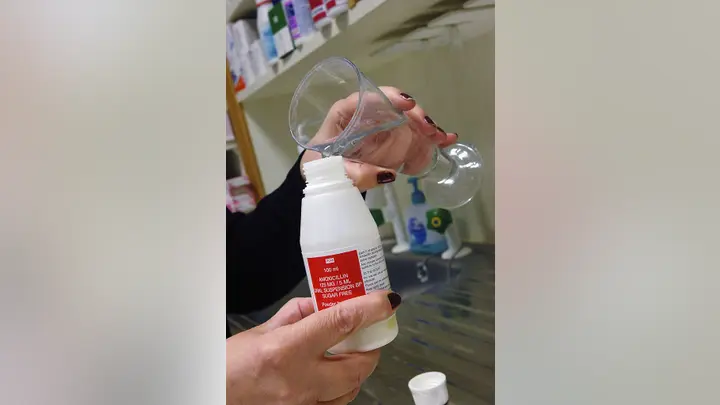Widely used kids’ antibiotic has been on the FDA’s shortage list since October 2022

Heading into the 2023 flu season, the United States has been grappling with an amoxicillin shortage for nearly a year.
In a recent study published in the journal Pediatrics, a team of physicians hailing from Boston Children’s Hospital made a significant discovery. Since the onset of the shortage, the likelihood of children receiving amoxicillin prescriptions for ear infections has drastically decreased by a staggering 91%.

Trump openly vows payback, with harsh attacks on the media and Milley
The study encompassed 3,076 children, with an average age of 3 years, who received treatment from a single healthcare provider. Astonishingly, most pharmaceutical manufacturers chose not to disclose the reasons behind the amoxicillin shortage or offer any estimated timeline for its resolution.
Fox News Digital has made efforts to reach out to the authors of the study for their insights and comments on this concerning issue.
Amoxicillin, widely recognized as the most frequently prescribed antibiotic for children, serves as a key treatment for various bacterial infections. These infections include conditions such as pneumonia, bronchitis, sinusitis, otitis media (ear infections), tonsillitis, skin infections, and urinary tract infections, as described by Medline.
On October 28, 2022, the U.S. The Food and Drug Administration (FDA) has officially declared a nationwide shortage of amoxicillin in its liquid form.
In the pages of their journal article, the study’s authors issued a compelling call to action. They emphasized that the FDA should play a more active role in addressing and addressing amoxicillin shortages in pediatric healthcare.
The study authors make a striking statement about the critical nature of drug shortages and their far-reaching impact on prescribing practices. They emphasize the need for vigilant monitoring and intervention by regulatory agencies, policymakers, and health care systems.
Their recommendations call for the FDA to improve oversight of essential drugs, mandate disclosure of supply problems, and create incentives for the production of antibiotics, especially in light of their historically low profitability.
Although antibiotics are not used to treat the flu and other respiratory viruses, it is important for medical professionals to note that these viral infections can pave the way for secondary conditions and infections that require drugs such as amoxicillin.
The American Academy of Pediatrics (AAP) has issued a warning on its website, noting that viral infections often lead to complications such as ear infections, pneumonia, and sinusitis. In addition, bacterial infections can sometimes emerge during these viral illnesses, which further emphasizes the importance of access to antibiotics such as amoxicillin.

Dr. Mark Siegel, a professor of medicine at NYU Langone Medical Center and a Fox News medical contributor, pointed out that a significant portion of the supply of amoxicillin is manufactured overseas. “Most of the active pharmaceutical ingredients used to make amoxicillin come from China and India,” he asserted. Siegel, who was not involved in the study, suggested that the shortage is a result of both high demand for the drug and over-prescription, particularly by pediatricians of frequent viral infections.
To address this problem, Siegel proposed two solutions: first, the FDA could collaborate more directly with manufacturers, and second, the Department of Health and Human Services (HHS) could offer incentives to help address the shortage.
Regarding the lack of liquid amoxicillin, Siegel notes that alternative drugs such as cephalosporins are more effective. However, he cautions against overusing these alternatives, as it can increase antibiotic resistance.
Walgreens, for its part, has implemented several proactive measures this year to deal with the increased demand for amoxicillin.
A spokesperson for Walgreens told Fox News Digital, “We are able to fill the majority of prescriptions at this time.” They emphasize that their teams are engaged in assessment throughout the year and are committed to collaborating with a wide range of suppliers and distributors throughout the season to provide the best possible service to their patients.
In response to amoxicillin supply constraints, Walgreens pharmacists may recommend “treatment alternatives” to health care providers and guide patients to the nearest facility capable of filling their prescriptions, the spokesperson added.
